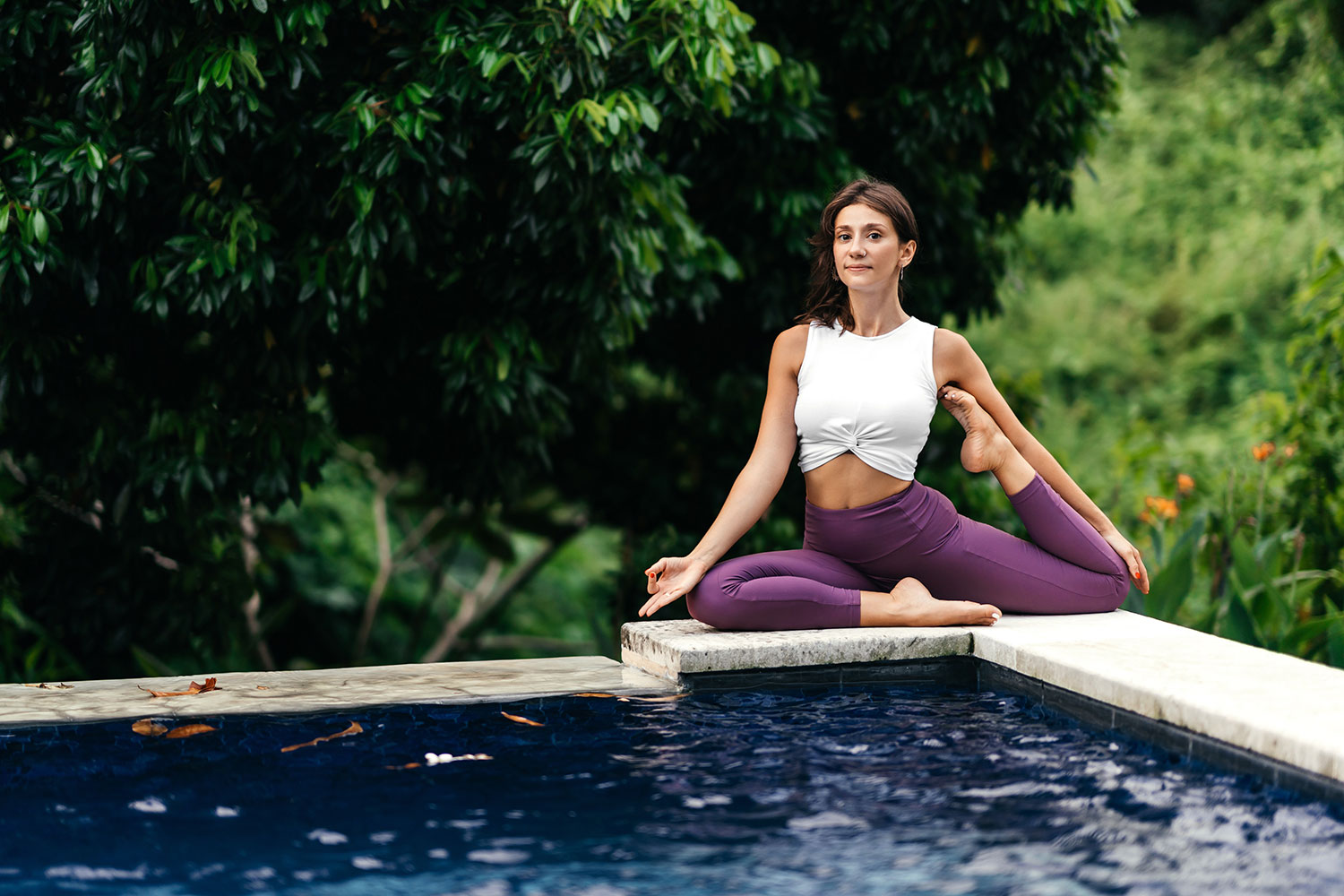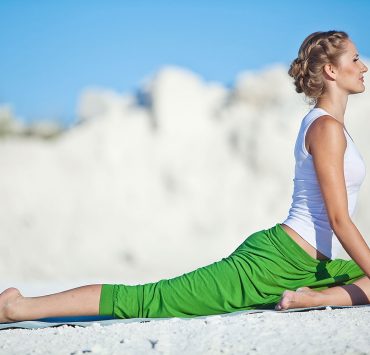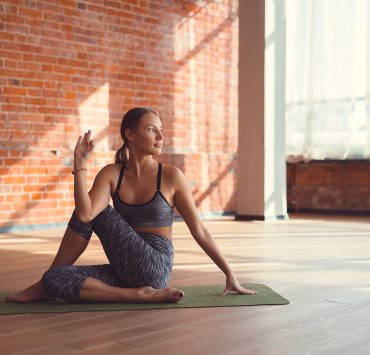
Susan views the world through a lens of spirituality, health,…
The peripheral nervous system (PNS) connects the central nervous system to the rest of the body. The PNS has three types of nerves:
- Sensory Nerves – connect to your skin
- Motor Nerves – connect to your muscles
- Autonomic Nerves – connect to your internal organs
Sometimes an inherited condition, illness, infection, injury, or even medication can destroy these nerves leading to false signals of pain or also not sending pain signals when it’s supposed to.
This condition is called peripheral neuropathy and it can affect any or all of the three types of nerves in the PNS. There are also hundreds of types of different peripheral neuropathies, each with different approaches for treatment options. Each type may also have different symptoms, but there are general warning signs to look out for, which include:
- Tingling or numbness in your hands and feet
- Feeling like you have a tight sock on
- Feeling weak and heavy in your arms
- Limbs locking in place
- Regularly dropping things
- A buzzing and/or electric sensations
- Sexual dysfunction (especially for men)
- Excessive sweating
- Digestive difficulties, constipation, and diarrea
If you suspect you may have peripheral neuropathy, it is highly suggested to get checked by a doctor to ensure it is not caused by a more serious underlying condition, such as diabetes.
General Treatment Options

Treatment options for Peripheral Neuropathy are dependent on the cause of the nerve damage and which nerve groups are affected. It can be painful to live with but if the underlying cause is treatable, the peripheral neuropathy can be treated as well.
In addition to possible treatment courses like medication, blood transfusions, or electric nerve stimulation, self-care options can also be very beneficial. Acupuncture, massage, and yoga are some of the options you can explore in addition to the treatment suggested by your doctor.
Peripheral Neuropathy as a Vata imbalance

The traditional healing modality of India, called Ayurveda, sees all people are dominated by one of the three doshas: earth (kapha), fire (pitta), or air (vata). Any imbalance in these elements causes disease.
Peripheral neuropathy is considered a vata imbalance. And it’s believed that specific diet changes, lifestyle changes, and yogasana to address this imbalance will help treat it.
To balance vata in your body through yoga asana, follow these tips:
- Focus on deep and long inhalations when breathing.
- Don’t hold the poses too long and do multiple repetitions instead — but don’t overexert and exhaust yourself either.
- Flow through each pose slowly and imagine you are moving through warm water or mud.
- Keep yourself warm.
- Stay present and connected to the earth.
- Finish your practice with a long relaxation.
Yogasana to Help Rehabilitate Peripheral Neuropathy
Some yoga styles and asana are specifically beneficial for peripheral neuropathy. Keep the ayurvedic tips in mind as you practice yoga.
A Gentle Hatha Practice

Hatha yoga is a traditional school of yoga that focuses on holding a pose while breathing rather than moving from one pose to another with each breath like in a vinyasa yoga class. It is the recommended practice for peripheral neuropathy because it is a more gentle style that helps stretch the body for improved circulation and gently strengthens without causing too much strain or pain.
Studies have shown that a regular practice of Hatha yoga of around 120 minutes long can be effective as complementary treatment for numerous neurological, including peripheral neuropathy.
Try out these poses to help alleviate the symptoms peripheral neuropathy and even prevent its progression altogether
Inversions to Stimulate Endocrine System and Soothe The Nervous system
Adho Mukha Svanasana — Downward Facing Dog Pose

From all fours, spread your fingers wide to get a better grip and position your feet as wide as your hips. Tuck in your toes and push your hips back and up so your tailbone points up to the sky. Imagine a straight line being created from the crown of your head to the point of your tailbone so that you do not over arch.
If your hamstrings are tight, it’s ok to keep your knees bent and heels off the floor. Keep pushing the floor away from you and internally rotate your arms as if you want your armpits to face each other.
Keep your neck relaxed as you hold this pose and remember not to overexert yourself.
Uttanasana — Forward Fold Pose

From standing, position your feet as wide as your hips and engage a Pada Banda or Foot Lock with the earth by lifting up all your toes, spreading them out wide, and bringing them back down. Imagine your entire foot is a suction cup.
Engage your core to keep your spine straight and tall and roll your shoulders up back and down away from your ears. Imagine a rope keeping you in a straight line from the bottom of your feet to the top of your head.
Inhale your arms up above your head and on the exhale, keep your legs strong and back straight as you hinge from your hips into a forward fold. Keep your core engaged to maintain your straight back and legs as much as you can until your hands rest on the floor.
If your hips or hamstrings are too tight to fold all the way, you may bend your knees as much as needed so you can support yourself by placing your hands on the floor and leaning forward into your palms.
Salamba Sarvangasana — Shoulder Stand Pose

From laying on your back, position your palms face down beside your hips. Bring your legs straight up, keeping your knees straight, and push down with your hands on the ground as you send your hips upwards towards the sky. Imagine pointing your tailbone up.
Do not move your head from side to side at any moment.
For support, place your hand on your lower back to hold yourself up from your elbows and shoulders. There should be minimal weight on your neck.
If you are unsure of getting into and holding a shoulderstand, it’s best to practice under the guidance of an experienced yoga teacher.
Asana to Open the Front Body and Stimulate Blood Circulation
Setu Bandha — Bridge Pose

From laying on your back, bend your knees and position your feet on the ground an inch wider than your hips. Keep your arms by your sides and bend your elbows so that your palms face each other. On your exhale, push your hips up to the sky.
You have an option of making it a more active pose by bringing your shoulder blades together and interlacing your fingers underneath you, or keep it more restorative by placing a yoga block underneath your sacrum and relaxing your arms.
Keep your feet flat on the ground, thighs slightly squeezing together, and tailbone pointed towards the back of the room. Your chest should feel like it wants to reach your chin while yoir chin pulls away from the chest.
Ustrasana — Camel Pose

From a high kneeling position, place your palms with fingers facing down a little bit lower than your sacrum. Push your hips forward slightly and look upwards. If you can go further, relax your neck so your head hangs behind you and push your hips forward even more. If your lower back is flexible enough, you may be able to let go of your lower back and place your hands on your heels instead.
Keep your arms straight to support you and keep pushing your hips forward. Make sure you can still breathe comfortable.
To come out of the pose, place your hands back on your back and slowly and carefully rise back up, allow your neck to come up last.
Supta Virasana — Reclined Hero Pose

From a kneeling position, bring your feet wider than your hips so that you can sit in-between them. If you can’t sit on the floor yet, raise yourself up by sitting on a block or piled up, folded blankets.
If you can already sit on the ground, begin to transition to the reclined version of Virasana by walking your hands and elbows backwards until your back is laying on the ground. Use piled up blankets, pillows, or a bolster to lay on if you can’t recline all the way back down.
Position your arms by your side or over your head and holding opposite elbows for an additional strech to your left and right side body.
Asana For Lower Body Blood Circulation
Pavanamuktasana — Knee to Chest Pose

Begin by laying on your back. Slide your heels together so that your legs are centered with your body. On an exhale, bring your left knee to your chest and hug it there or interlace your fingers over your knee to hold it in place.
You may find it more comfortable to aim your knee, not quite towards the center of your chest, but somewhere in-between your chest and your armpit.
No need for any active pulling or pushing in this pose. Just keep holding your knee towards your chest and relax all other muscles that are not needed to keep this basic asana shape.
Hold the left side for a few breaths or minutes then switch to the right side.
Baddha Konasana — Butterfly or Gomukhasana — Cow Face Pose

From a seated position, get into Baddha Konasana by bringing the soles of your feet together. Depending on the flexibility of you hip flexors, your heels may be away from you, forming a diamond shape with your legs, or by your groin. If needed, place blocks or pillows underneath your knees for support.
To get into Gomukhasana, slide your left heel towards your right hip so that your knee is centered with your body and points forward. Stack your right knee on top of your left with your right heel resting by your left hip. Depending on hip flexor openness, your knees might be far apart from each other. If this is too much tension for your hips, you may extend your bottom leg straight forward. Switch sides after a few breaths or minutes.
In either pose, add some extra circulation to your feet by spreading out your toes and interlacing your fingers between them. You may also try very gently spreading your fingers too to massage the spaces between your toes.
Viparita Karani — Legs up the Wall Pose

Position yourself to lie down on your back with your legs straight up on a wall. If needed, you may use a support like a pillow or rolled up blanket under your sacrum. The distance between you sit bones and the wall id depended on your flexibility and comfort. To help your legs remain straight, you may use a yoga strap around your thighs, just above the knees.
Do not use a pillow under your head for this pose. Instead, place a rolled up towel underneath your neck so your cervical spine does not flatten.
Conclusion
Peripheral neuropathy can be a tricky condition to treat but working with your doctor to discover the underlying cause will help inform you to find the best treatment options available. In addition to whatever treatment plan you choose, a complementary self-care practice like yoga will help ease the challenges of rehabilitating yourself from peripheral neuropathy and so much more.
What's Your Reaction?
Susan views the world through a lens of spirituality, health, and compassion. Her positive outlook on life shines through her writing, which is heavily focused on yogic living, meditation, and conscious eating.














